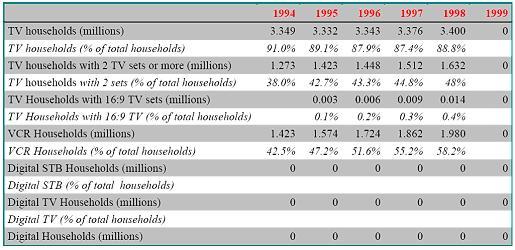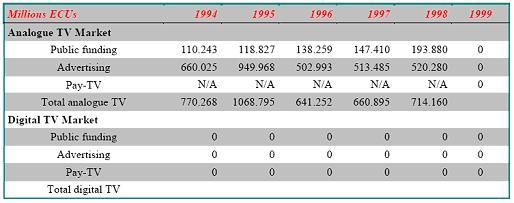Are people ready to accept Internet TV?
To answer these question, we did some research on the internet. We found the market analysis of two country: Greek and China. Although it is only 2 country, China have one third of the TV users in the world and is here by very representative of the global TV users. Below are the info of the Greek TV market.
Country Fundamentals of Greek
Equipment
Television Market estimates
TV market of China China has the world’s largest number of cable television subscribers – 115 million by the end of 2004 – and is expected to have 150 million by 2010. According to the latest statistics from State Administration of Radio, Film and Television (SARFT) China’s 2,569 broadcasting operators broadcast 2,355 radio programs and 1,255 TV programs by the end of 2004. China’s cable TV network stretches over 4 million kilometers. The value of China’s cable TV equipment market reached $1.6 billion in 2000. Growing at a 45 percent clip, the market is expected to be $12 billion by 2005. The broadcasting and TV equipment sector will continue to be promising over the coming years because the market is still relatively under-developed in China. SARFT has announced that it intends to provide TV services to 90 percent of the population, a feat that will require much more satellite, microwave and optical fiber equipment as well as program production and TV reception equipment.
China has the world’s largest number of cable television subscribers – 115 million by the end of 2004 – and is expected to have 150 million by 2010. Chinese households now own more than 400 million TV sets and they enjoy a standard 50-channel cable selection for an average fee of $2 per month. China TV subscribers occupy one third of the international TV users. It is analyzed that China TV viewers’ demand for TV programming is 9 million hours each year, while the current supply is only 2 to 3 million hours. China’s TV stations such as CCTV and provincial level TV stations plan to launch 50-80 pay TV channels by the end of 2005.
A recently survey reflected seven main behaviors of consumers [2]:
• First, consumers look for high-quality programs and regard this as a decisive factor in whether or not to choose digital TV.
• Second, consumers’ complaints focus on too many commercials inserted into
programs. This indirectly pushes them to explore new paths to acquire information and entertainment and thus issues a challenge to the current TV model of earning profits.
• Third, most consumers know little about digital TV, which results in insufficient dynamic to foster digital TV markets.
• Fourth, consumers prefer to choose programs by themselves and to avoid
commercials rather than enjoying high definition digital TV, which conveys that
consumers regard the content as their first preference.
• Fifth, consumers are willing to pay extra charges for news and TV plays in the first place.
• Sixth, it is whether consumers recognize the content and how they evaluate its value that obstructs the popularization of digital TV. Therefore, the satisfaction of experimental users is of vital importance.
• Seventh, many consumers hesitate to accept digital TV for they are waiting to see its perspective in the days ahead.
References:
[1] http://europa.eu.int/ISPO/infosoc/telecompolicy/en/Eurorep99gr.pdf
[2] http://www.buyusainfo.net/docs/x_2737062.pdf


